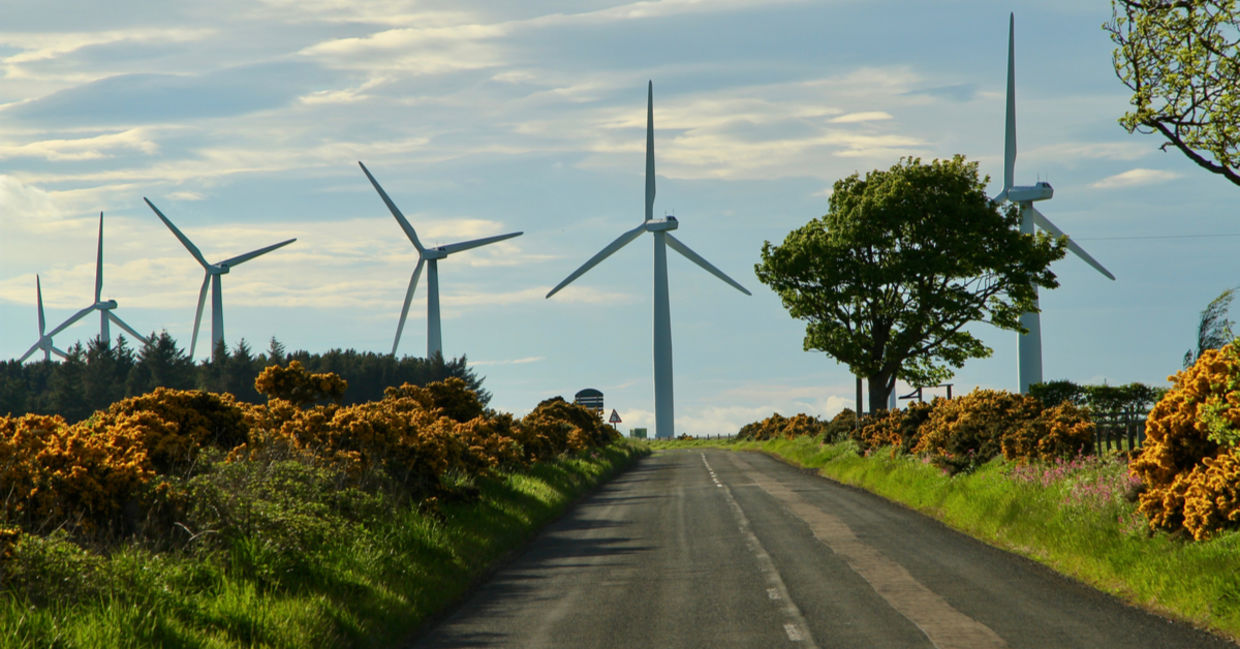
Wind Farm in Highlands of Scotland (LifeThroughtALens / Shutterstock.com)
Scotland will be hosting the 2020 UN Climate Conference (COP26), in Glasgow and is shaping up to be its shining star. That's because the country, which is part of the UK, is on target to reach 100 percent renewable energy before the November event.
When the goal was set back in 2016, the only drawback has been in having enough storage for excess power that is generated. The majority of renewable energy comes from wind power which thanks to Scotland's notoriously bad weather is cheap to produce and very reliable
After closing the last coal-fired power plant in 2016, there is only one fossil fuel plant – a gas-fired one – in Peterhead in Aberdeenshire according to Renew Economy, renewables are taking its place.
Wind power is the primary renewable power source in Scotland. November 2019 was the first time that Scottish wind power, offshore and onshore, produced more than 100 percent of the threshold. This actually occurred on 20 out of 30 days during the month.
The largest source of renewable energy is the Beatrice Offshore Wind Farm which opened in July 2019 can generate enough power for 450,000 homes according to the BBC. The Seagreen Wind Farm being built off Angus will be even larger and will be able to power one million homes when it is complete.
While the country is not officially using 100 percent renewables, it's getting much closer according to the BBC. The amount of renewables was measured at 76.2 percent back in 2018 and a recent report from Scottish Renewables said that the country will hit its mark this year.
The Scottish government has also set a legally binding target to cut greenhouse emissions to net zero by 2045 according to a news release about climate change and that is a full five years earlier than the rest of the UK as well as most of the world.
The targets include emissions from aviation and shipping, two major greenhouse-gas producing industries.
The government's climate control legislation includes annual targets every year (using reductions from the 1995 baseline) until they reach net zero. For example, the 2020 target is a 56 percent reduction.
These milestones are even more impressive when you consider the fact that Scotland doesn't rely on international credits or an accounting system that makes some of the emissions disappear. They are based entirely on facts on the ground and in the air.
The COP26 conference is set to devise rules for a carbon market between countries, something they could not agree on in 2019 at COP25. Countries will also have to submit their new long-term climate goals to meet their 2015 Paris agreement commitments. Scotland, and the entire UK, appears to be well ahead of the pact.
YOU MIGHT ALSO LIKE:
Scottish Wind Farms Produce More Energy Than the Country Needs
The EU Urged its Members to Commit to Net Zero Emissions by 2050
5 Paris Agreement All-Stars to Watch







